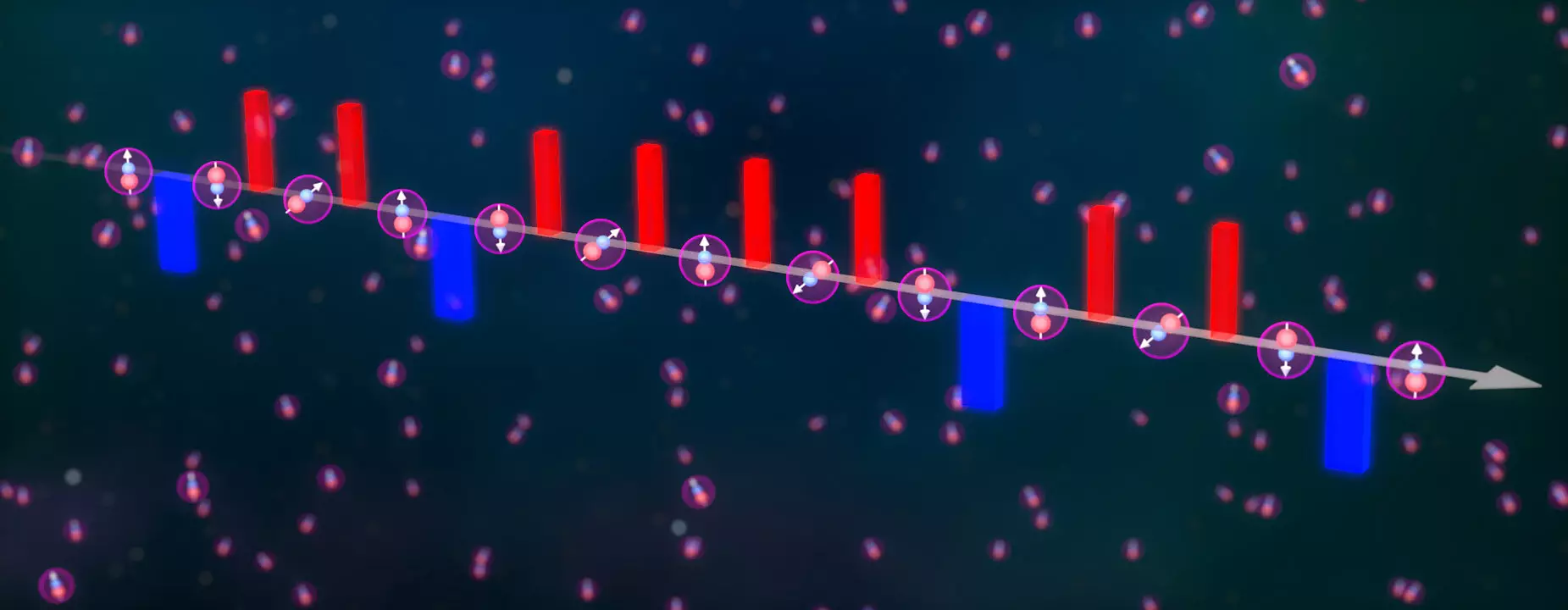Quantum mechanics presents a realm where phenomena frequently defy our classical intuitions, particularly through the behavior of quantum spins. These spins govern a variety of intriguing phenomena, including superconductivity and magnetism. Despite significant advances in theoretical frameworks, replicating and manipulating these interactions in a laboratory setting has proven to be a formidable challenge for physicists. Recent research provides a promising solution by employing an innovative technique that opens new avenues for understanding complex quantum systems.
A team led by University of Colorado Boulder’s Jun Ye, in collaboration with researchers from Harvard University, has made headway in this complex area by utilizing a method known as Floquet engineering. This approach employs periodic microwave pulses to meticulously tune the interactions between ultracold potassium-rubidium (KRb) molecules. The significance of Floquet engineering lies in its potential to manipulate quantum states akin to a “quantum strobe light.” Just as a strobe can create mesmerizing visual effects in the macroscopic world, this technique facilitates distinctive outcomes in quantum mechanics by governing how particles interact.
The process begins with the encoding of quantum information within the two lowest rotational states of the molecules. By leveraging an initial microwave pulse, the researchers manipulate these states into a superposition, a hallmark of quantum phenomena. Following this encoding, they apply periodic microwave sequences which, akin to adjusting the frequency of a strobe light, allow for precise control over the interaction dynamics within the molecular ensemble.
The researchers faced substantial technical challenges with their previous experimental setups, particularly regarding the limitation in the number of microwave pulses they could apply. Innovation was needed, and through collaboration with electronics experts, they developed an FPGA-based arbitrary waveform generator that enabled the application of thousands of pulses. This advancement not only enhanced the precision of quantum manipulation but also allowed the research team to eliminate single-particle noise and sharply modify interactions among the molecules.
Utilizing Floquet engineering, the researchers successfully tuned the interactions to mirror complex spin models like XXZ and XYZ. These models are essential in understanding how quantum spins interrelate, forming a backbone for interpreting various material behaviors. The essence of this interaction can be likened to a dance, where the molecules’ movements shift based on their “partners,” reflecting alterations in their spin states.
A pivotal outcome of this breakthrough is the demonstration of two-axis twisting dynamics within the KRb system. Two-axis twisting describes a scenario where quantum spins are manipulated along two different axes, facilitating the creation of highly entangled states. Entanglement is a crucial property in quantum mechanics, enabling a level of precision in measurements that could revolutionize fields such as quantum sensing and spectroscopy.
Miller, a graduate student involved in the study, expressed excitement upon witnessing the first indications of two-axis twisting. The realization of this dynamic, theorized in the early 1990s, marks a significant leap in practical applications of quantum entanglement. This dual-axis manipulation enables the generation of spin-squeezed states, configurations that minimize uncertainty in one aspect of a spin system while maximizing it in another. Such states enhance sensitivity in various experimental contexts, paving the way for advanced applications in quantum technologies.
Despite the successes of this research, the journey is far from complete. While achieving two-axis twisting, the team acknowledges the need for further exploration, particularly in the realm of entanglement detection. Future studies will focus on improving methodologies to robustly verify the generation of entangled states within their system. This remains a logical trajectory as verification is essential for harnessing the full power of these quantum phenomena.
Moreover, the implications of enabling controllable systems to explore quantum many-body interactions extend beyond the immediate experiments. The capability to explore the rich energy structures of polar molecules could yield insights into various physical effects yet to be understood in quantum physics.
The progress made in controlling ultracold potassium-rubidium molecules through Floquet engineering signifies a transformative step in quantum research. By mastering the dynamics of quantum spins, scientists are poised to unlock new dimensions in quantum mechanics, broadening our comprehension of fundamental interactions within the universe.


Leave a Reply